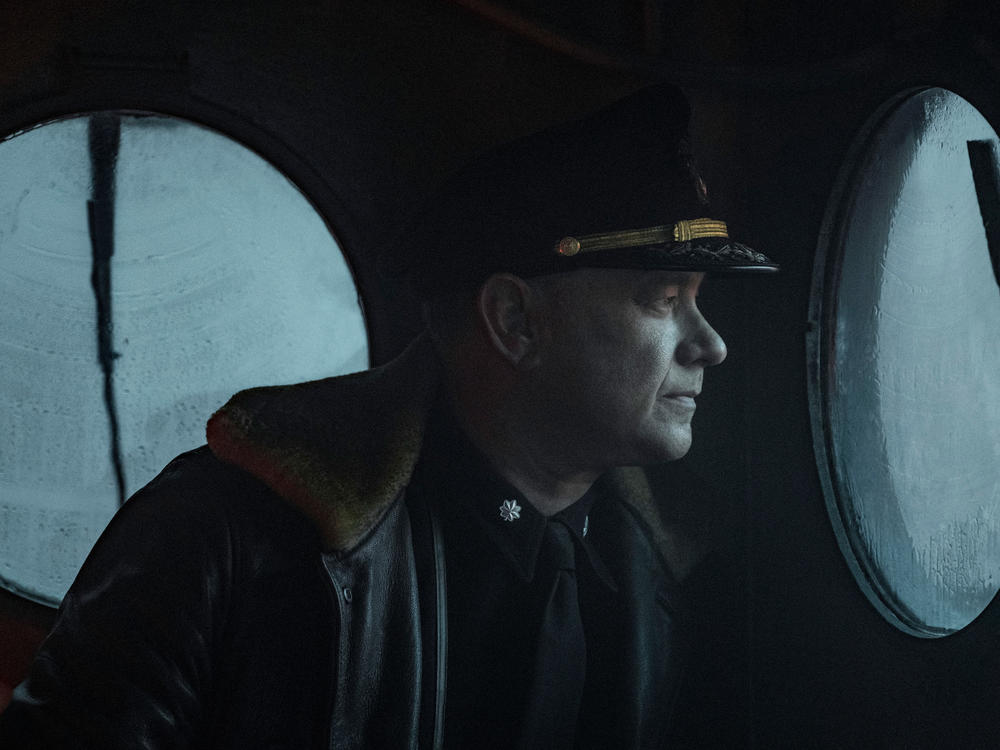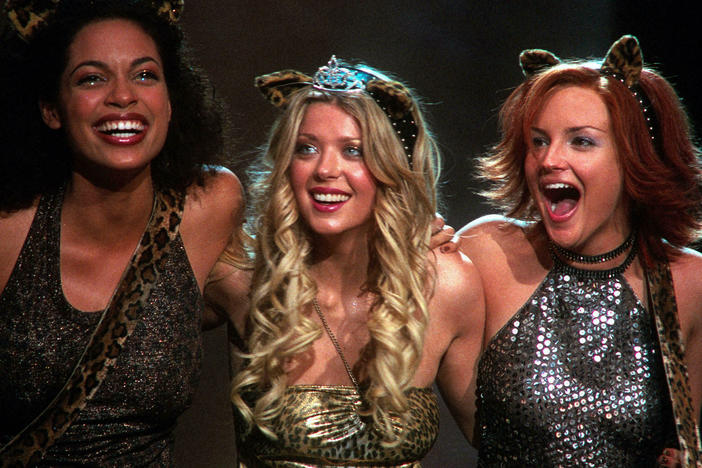Section Branding
Header Content
World War II Naval Drama 'Greyhound' Charts A Trim, Efficient Course
Primary Content
Tom Hanks' screen persona is ...
One is tempted to reach for the word avuncular here, but that doesn't quite pin it down. He's not America's Uncle, after all, he's America's Dad. But paternal doesn't get you there, either, as that word has taken on an oppressive, exclusionary patina, which are two qualities that couldn't stick to Hanks in a million years, onscreen or off. The guy's a dependably empathetic, inviting presence, even when he's playing someone as inscrutable as Fred Rogers (A Beautiful Day in the Neighborhood) or as gruff-but-lovable as Jimmy Dugan (A League of Their Own).
Affable, then. Let's go with that.
On those rare occasions Hanks has attempted to run from his inherent, bone-deep likability to instead play heels, in films like The Ladykillers, Charlie Wilson's War and, infamously, The Bonfire of the Vanities, audiences recoil. It's the Jimmy Stewart Phenomenon at work. "But you're so affable!" we collectively insist. "We love your ability to aff! So shut up and get back to affing, already!"
Of course, Alfred Hitchcock found a way to twist that phenomenon to his own twisted needs; he knew he could cast Jimmy Stewart as a Peeping Tom or a creep obsessed with a dead woman and audiences would blithely accept it, because it was Jimmy Stewart. Jimmy Freaking "I'll lasso the moon for ya" Stewart.
Having not yet found his Hitchcock, Hanks has settled into a series of roles that draft on his uncanny ability to get us to deeply identify with whomever he's playing. But in the taut World War II film Greyhound, dropping Friday on Apple TV+, Hanks seems to have arrived at a troubling but inevitable epiphany: He no longer has to bother creating a layered character, he can just ... be him.
In Greyhound, which Hanks adapted from the 1955 novel The Good Shepherd by C. S. Forester, he plays Ernie Krause, captain of a U.S. warship leading a convoy of merchant and troop ships through a North Atlantic infested by German U-boats in February 1942. In the book, Krause possesses a rich, deeply conflicted inner life: He was a career officer about to retire when the Pearl Harbor attack officially propelled the U.S. into World War II, so he's at once significantly older, and far less battle-tested (this being his first wartime command) than the men he's tasked to lead. Between U-boat attacks, he broods over his failed marriage, his devout Christian faith, his previous career disappointments, and a profound case of Imposter Syndrome as he constantly second-guesses his decisions.
In the film, however, Krause's backstory and personal struggles have been loaded into a torpedo tube and fired into the murky depths of Davy Jones' Locker. This Krause is still a Christian (read: he prays a few times), and he's not married (read: Elisabeth Shue shows up in a flashback to smile ruefully at him and deliver all of six lines). Otherwise, he's ... Tom Hanks.
Which, it turns out, in a film as lean (88 minutes!) and efficiently executed as this one, is enough. Greyhound director Aaron Schneider knows what he's doing, and he starts doing it right away, packing the film with naval action from the jump. As soon as the convoy moves out of range of U.S. air cover and begins to cross "The Black Pit" — that yawning stretch in the middle of the Atlantic when the convoy will be on its own — the sonar operator detects a U-boat. More follow. Tension rises, released in intermittent bursts by small victories and dismaying losses.
The film's several battle sequences are clearly and effectively staged: They reek of CGI, but the technology is used well, as when we zoom out in virtual drone shots that show us the action from far above — so we can see just how nearly a near-miss misses as we watch a ship slooooowly steering itself out of a torpedo's path in the nick of time. We soon come to recognize and distinguish the various U-boats descending on the convoy, as they've each got different symbols painted on their conning towers.
In that sense, the U-boats register as stronger and more distinct personalities than any Greyhound crew member manages to, as the men that surround Hanks' Krause are called upon to do little more than look worried, sad or happy as Hanks' script dictates. No, this is Hanks' show, and he seems completely in his element awash in sea-spray, peering through binoculars while shouting torrents of naval jargon. (A word about said jargon: Greyhound is the kind of movie in which there's always a sailor on hand to translate for an audience of landlubbers by helpfully shouting in astonishment that something will soon happen, is happening, or has just happened — often all three, just to be safe.)
It doesn't much matter that Krause and the men who serve him might as well be CGI simulations like the boats around them. Like a sailing vessel, Greyhound benefits from the sleekness of its design and its characters' lack of baggage, both literal and emotional. As befits his status as America's Dad, Hanks has constructed for us the ultimate Dad Movie — all the action you could ever need or want, with no annoying characters hanging around, harboring pesky needs and wants of their own.
Copyright 2020 NPR. To see more, visit https://www.npr.org.
Bottom Content




